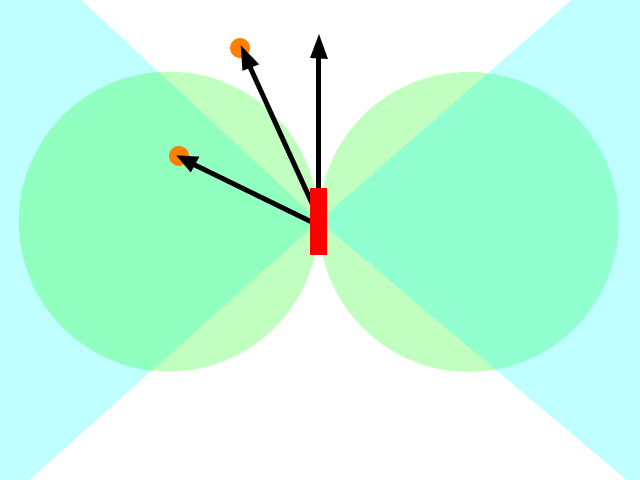I know this is an oldish question, but I think there is something that has been missed in the answers given so far. In the original question, the missile (or whatever) was told to accelerate towards the position of the target. Several answers pointed out that this was wrong, and you should accelerate towards where you think the target will be at some later time. This is better but still wrong.
What you really want to do is not accelerate towards the target but move towards the target. The way to think about this is to set your desired velocity pointed at the target (or a projection of the targets location) and then figure out what acceleration you could best apply (given whatever restrictions you have, i.e. a missile probably can't accelerated directly in reverse) to achieve your desired velocity (remembering that velocity is a vector).
Here is a worked example I implemented this morning, in my case for a player AI in a sports simulation game, where the player is trying to chase their opponent. The movement is governed by a standard 'kick-drift' model where accelerations are applied at the start of a timestep to update velocities and then objects drift at that velocity for the duration of the timestep.
I would post the derivation of this, but I've found there is no math markup supported on this site. Boo! You will just have to trust that this is the optimal solution, bearing in my that I have no restrictions on the acceleration direction, which is not the case for a missile type object, so that would require some extra constraints.
Code is in python, but should be readable with any language background. For simplicity, I assume each time step has a length of 1 and express the velocity and acceleration in appropriate units to reflect that.
self.x = # current x co-ordinate
self.y = # current y co-ordinate
self.angle = # current angle of motion
self.current_speed = # current magnitude of the velocity
self.acc # Maximum acceleration player can exert on themselves
target_x = # x co-ordinate of target position or projection of it
target_y = # y co-ordinate of target position or projection of it
vx = self.current_speed * math.cos(self.angle) # current velocity x component
vy = self.current_speed * math.sin(self.angle) # current velocity y component
# Find best direction to accelerate
acc_angle = math.atan2(self.x + vx - target_x,self.y + vy - target_y)
Note that the atan2(a,b) function computes the inverse tan of a/b, but ensures the angles sits in the correct quadrant of a circle, which requires knowing the sign of both a and b.
In my case, once I have the acceleration I apply that to update the velocity by
vx_new = vx + self.acc * math.cos(acc_angle)
vy_new = vy + self.acc * math.sin(acc_angle)
self.current_speed = math.sqrt( vx_new**2 + vy_new**2)
self.angle = math.atan2(vy_new,vx_new)
I also check the new speed against a player dependent max speed and cap it at that. In the case of a missile, car or something with a maximum turning rate (in degrees per tick) you could simply look at the current angle of motion versus the calculated ideal and if this change is greater than allowed, just change the angle by as much as possible towards the ideal.
For anyone interested in the derivation of this, I wrote down the distance between the player and target after the timstep, in terms of the initial position, velocity, acceleration rate and acceleration angle, then took the derivative with respect to the acceleration angle. Setting that to zero finds the minima of the player-target distance after the timestep as a function of the acceleration angle, which is exactly what we want to know. Interestingly, even though the acceleration rate was originally in the equations, it cancels out making the optimal direction independent of how much you are actually able to accelerate.


